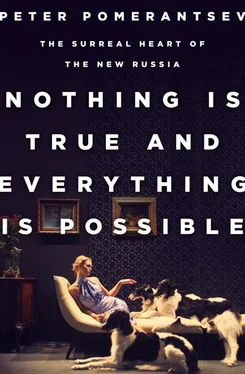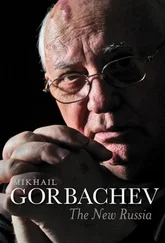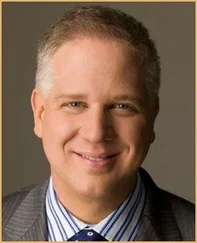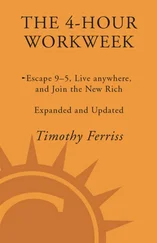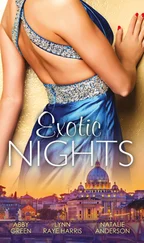“That was the thing about Ruslana,” says Luba. “There was something childish about her. She believed. And she liked that he was older, she missed her father.”
Ruslana told friends Alexander wanted to marry her. Introduced him to her mother. They lived together.
When Alexander dumped Ruslana she kept on texting him, hoping for an answer. She couldn’t eat, couldn’t sleep. Lost weight. She would ask friends to persuade him to change his mind. Her Facebook page was full of poems of unrequited love:
I gave love and forgave hurt,
Hid pain in my heart in anticipation of the miracle.
You left again, leaving in return
A castle of pink dreams and ruined walls.
And:
Don’t be silent my love, don’t be silent.
My soul yearns for you.
Turn back. Glance back.
My bright little sun.
I can’t breathe without you.
In the end Alexander’s assistant contacted her and told her not to bother him again.
And just as suddenly as Alexander dumped her, Ruslana’s career stalled. The calls dried up.
“She couldn’t understand,” says Luba. “Suddenly she was one of a thousand girls. A no one.”
She went back to New York to look for more work in the last months before her death. There was a new boyfriend, Mark, a Russian luxury car dealer in New York, but better known as a guy who parties with all the models.
“I’m probably the only girl Mark hasn’t had an affair with,” says Luba. Ruslana had fallen for another playboy, though this time a much poorer one. “That was Ruslana’s problem,” repeats Luba. “She believed.”
• • •
Elena Obukhova used to be a model. Now she’s a psychologist. “Look at these girls, they’re all lost. Moscow is full of them. I’d have lots of clients: it’s a very specific journey. I would understand them better than a regular analyst.”
Elena too was discovered by chance, on the street in Tashkent, Uzbekistan, where, like Ruslana in Kazakhstan, she was one of the blonde ethnic Russian girls left after the empire fell. We walk through a spring Moscow, all the men looking around at the giant blonde beside me.
When we come to shoot the interview she’s different than the younger girls I’ve interviewed: she has a language to talk about herself in, stares down the camera instead of searching in the air for words.
“I was fifteen and I remember listening in at the kitchen door. The scout was trying to convince my parents to let me go to Milan. I couldn’t understand why he had chosen me, just like that on the street. I thought I was too tall, ugly, everyone at school would tease me. And now I was listening in at the door, just praying my parents would say yes. Italy! I hadn’t been to Moscow, let alone Italy. And my poor father, he couldn’t understand what was going on, he thought a model and fashion designer was the same thing.”
Her parents let her go eventually, though only after she had finished school. She was sixteen going on seventeen when she reached Milan.
“Oh, I was so confused. People were nice and nasty at the same time. I mean, they talked nicely but said nasty things. I had thought everyone would be fascinated by me, I would be like a movie star. But it’s the opposite. No one cares about your personality. You become a picture. That was hard, because growing up I had been used to talking about myself, gesticulating, shouting, laughing. The first thing you learn in modeling is to put on a mask, strike an array of poses, pouts, smiles. And before you know it you’ve lost the ability to talk normally, laugh naturally. But you’re sixteen, seventeen, eighteen, everything inside is boiling over, but your profession is all about suppressing that.”
“And the men?”
“Oh the men. They flock around. You’re a prize—but they’re sleeping with the girl on the photo, not you, and you begin to become your image and just become even more lost. And then there is a very common type you come across whose life is dedicated to making models fall in love with them. They’re these pseudo-romantics, who imitate a tortured inner world and con models into romances, one after another, which no doubt makes them feel a little more self-worth. It seems all perfect with cars and private planes and flowers and you begin to think it’s real, and when you hit reality you are just dashed to bits. And you get to this point where you’re so confused as to who you are, what’s real and what’s fake, that, and I realize this sounds odd, but you begin to feel the only way you can become real again is to kill yourself. My method was hanging. I stood on the windowsill and jumped off. The rope must have given way, and I came to hours later bruised but alive. I just felt shame, so much shame.”
But when I put forward that love and career were the catalyst for Ruslana’s suicide, her friends and mother all turn to me and say in a chorus:
“Not Ruslana!”
“She wasn’t like that!”
“She wouldn’t kill herself over some guy!”
“She was looking forward to university, didn’t care if modeling was behind her. None of that mattered to her!”
Back in the United States the drug tests we sent out have returned: Ruslana had no signs of illegal drug abuse over the last months. But neither had she been drugged with anything that could have knocked her out.
But the more Ruslana’s family and friends interrogate the police account of her death, the more skeptical they become. Why didn’t the police look in the actual building that she jumped from? Why didn’t they specify the actual place she leapt from? How could she have jumped 8.5 meters? How? She wrote incessantly—why no note? She’d hinted to friends she was owed money from old contracts; could one of those have led to some sort of conflict?
I help the mother find a postmortem expert to go over the evidence again. He asks for samples of Ruslana’s organs: histology tests will show whether her organs had stopped functioning before she hit the ground. He will reinspect the autopsy to see if it yields fresh clues.
• • •
A few months pass. I get a call. Another model has killed herself, this time in Kiev, Ukraine. She was Ruslana’s friend; her name was Anastasia Drozdova. She too threw herself from a high-rise block of flats.
Luba knew both girls well. She chain-smokes backstage at a fashion show, chews her lips: “First Ruslana, now Anastasia. I’m wondering which of my friends will be next?”
I phone TNT: “There’s been another suicide. I’m on my way to meet the parents now.”
The producers at TNT are cautious. “Two suicides is a little depressing for us. We need positive stories. Please keep that in mind.”
I sit with Olga, the mother of the second girl, in a Kiev café. She’s slight, a former ballerina. A waitress takes our orders, the process torturous: how to decide whether you want extra cream when you’ve just lost your daughter?
“I got home late. She wasn’t there. I found a note: ‘Forgive me for everything. Cremate me.’ I ran to the police station. A cop said casually: ‘You the mother of that girl who threw herself from the block of flats?’ I didn’t know what to say. They showed me a bag with trainers. They were hers. Then there could be no doubt.”
Back at the mother’s apartment she shows me home video of Anastasia as a child. The apartment is in a regular 1960s panel block, but inside it’s done up nicely with new floors and a European, open kitchen. Anastasia paid for it as a present to her mother. When she was growing up they had shared bunks in the dormitories where dancers were housed by provincial ballets. The father had left when Anastasia was young. The mother had sent Anastasia to ballet school.
Читать дальше
